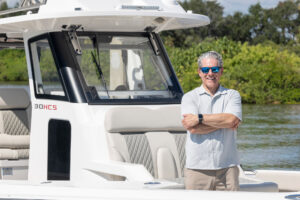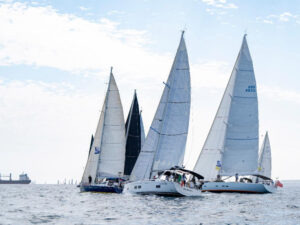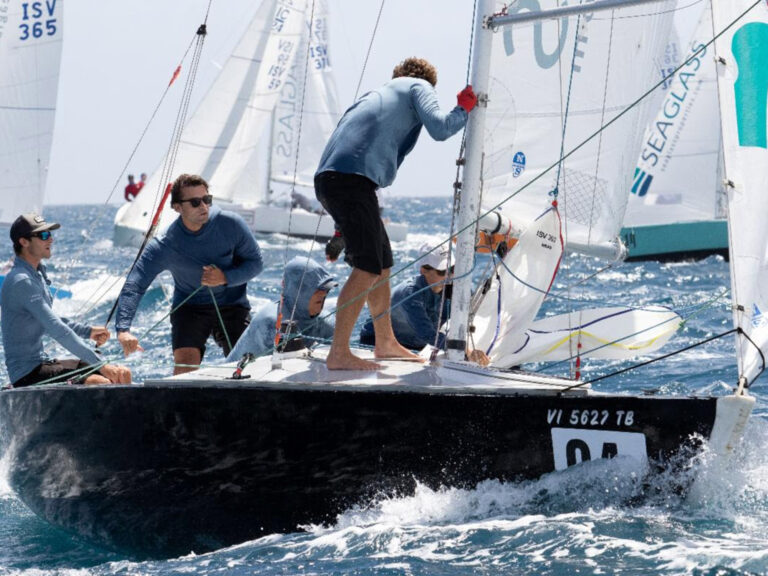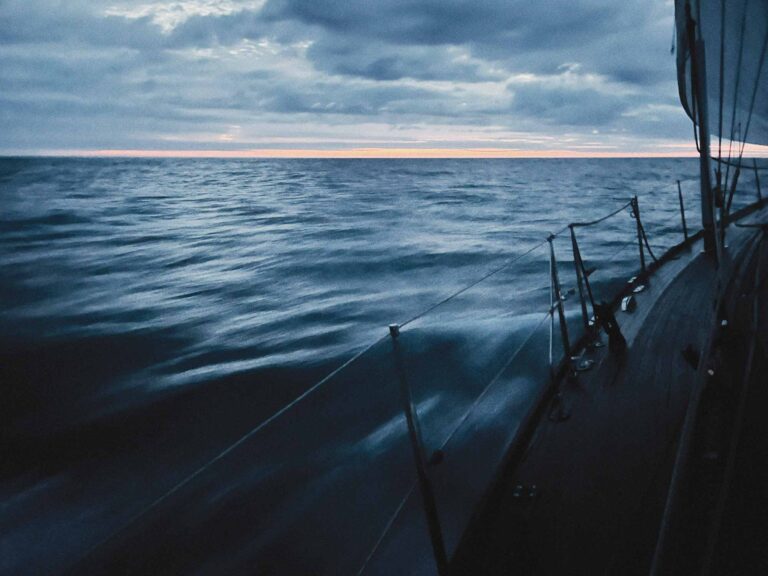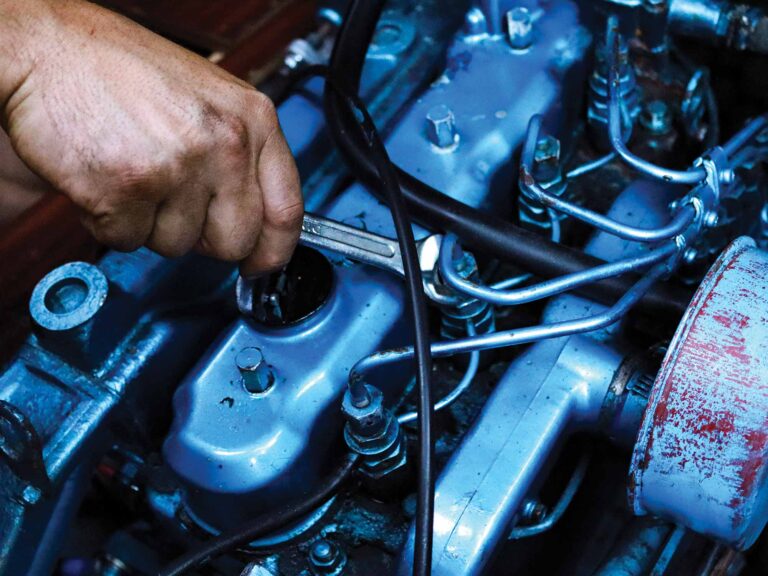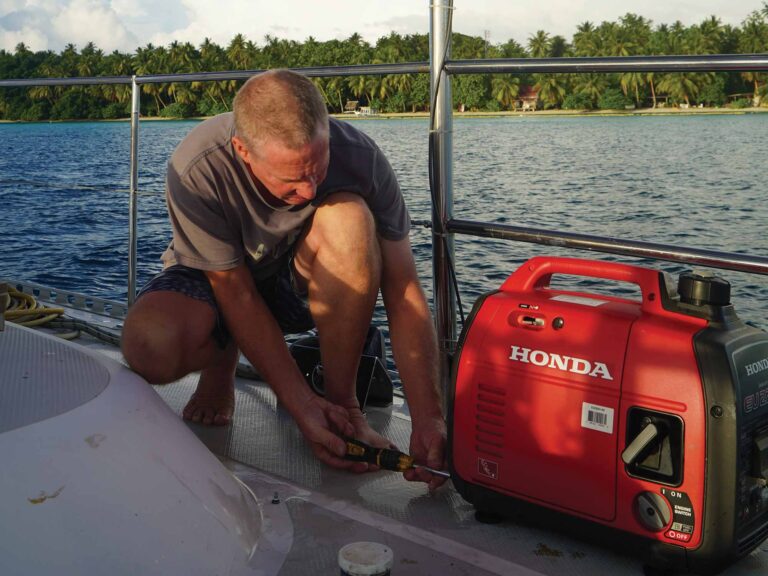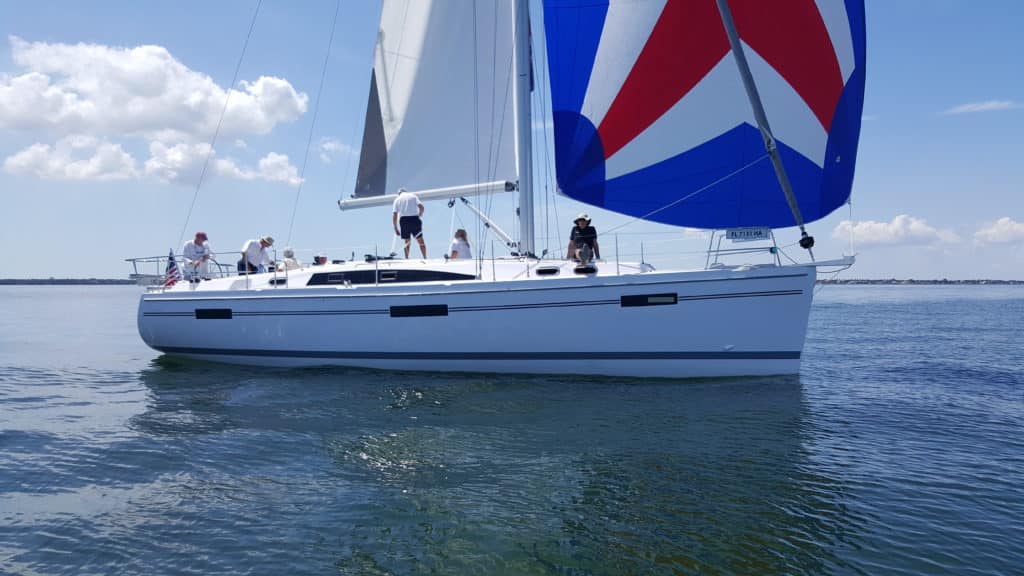
Where, oh where, have all the U.S. production boatbuilders gone? The simple answer, if there is one, is that over the past several years, as high-volume European builders have leveraged their size and efficiency to become ever-larger players in the American marketplace, the homegrown domestic manufacturers have been squeezed tighter and tighter by a vast fleet of imports. Along the way, there have been multiple casualties among the ranks of Yankee boatbuilders.
Thank goodness that the venerable American builders of Catalina Yachts have not been among them. In fact, with the introduction of the new 425 — more than 1,000 units of the company’s previous 42-footer, originally launched in 1988, were built — Catalina has issued a statement, and it’s a strong one. As wholesome and iconic a brand as good old Chevy, Catalina has produced in the 425 an affordable, well-crafted boat that might not look much like the current wave of French and German imports (no straight stem, no hard chine, no drop-down folding transom), but which represents fine value, ingenuity and integrity. The 425 is a thoroughly modern example of an old-school cruising boat, and I mean that as nothing but a pure compliment. There is an important link between the old Catalina 42 and the fresh 425: Both were imagined and brought to fruition by the company’s longtime in-house designer, Gerry Douglas. Inspired by the opportunity to take another swing at a boat he originally drew nearly three decades ago, at the outset Douglas established some clear priorities for the new design.
Saving weight was one of them. Thanks to a carbon core in the deck, a ¾-inch end-grain balsa core above the waterline, and the elimination of aluminum toerails at the molded hull/deck joint, among other innovations, the new boat is some 2,000 pounds lighter than the original model. Safety was another priority. The 425 has a seriously bulked-up rudder on one end and a watertight crash bulkhead, in case boat meets container, at the other. Finally, believing that accessibility and maintenance go hand in hand, Douglas made sure that the steering quadrant was reachable from the dual aft cabins; that there were dedicated lockers for filters and machinery, including the genset; that the Yanmar diesel could be fully accessed quickly and easily; and that all the through-hulls were grouped together in one location in the port cabin. When it comes to systems aboard the 425, “logical” is the word that comes to mind.
Aesthetically, with its 81-degree stem (to prevent the anchor from banging the bow), minimal overhangs, low coachroof and gently sloping sheer line, the 425 is a good-looking boat. Starting at the pointy end and working aft, there’s a secure bowsprit with bobstay that doubles as an anchor roller and a tack point for an asymmetric kite or code zero headsail. The modified Seldén B&R rig has an extra set of forward shrouds to prevent mast pumping. An in-mast furling mainsail and standard 100 percent self-tacking jib are both by Doyle Sails (overlapping genoas are optional, though the nearly 12-foot tracks to accommodate them come with the boat). There’s a nice set of butterfly hatches that open in opposing directions above the saloon for maximum ventilation below (the legendary Don Street would be happy).
The functional cockpit deserves a little extra attention here. A split backstay terminates forward of twin Edson steering pedestals to give the helmsman plenty of room behind the wheels and good sightlines for the Raymarine chart plotter, stationed just forward in its own pod. A passageway between the helms leads to a swim step and boarding platform aft. The generous starboard settee unfolds to create a nice double berth for outdoor snoozing beside the central cockpit table, which also houses a fridge. Via a large gull-wing hatch, the port settee opens directly into one of the twin aft cabins, and can be used to stash bikes or sails when not in accommodations mode. The double-ended German-style mainsheet is led to the helm and also to the coachroof, a versatile setup for either cruising or club racing.
Down below, the forward owner’s cabin features a large centerline berth with an elevating adjustable mattress for reading. A roomy adjacent head boasts a big shower stall. In the saloon, the U-shaped settee and dining table to port face a central table to starboard, which is flanked by two comfy seats to double as the navigation station, complete with USB ports and 12-volt chargers. All air-conditioning ducts are fixed above the cabin windows for maximum efficiency. The L-shaped galley to port faces a second head to starboard, at the foot of the companionway. On our test boat, there were no fewer than five compressors: two for the AC and three more for the cockpit fridge, the deep freezer/fridge in the galley, and the wine cooler, respectively. The interior LED lights are all on dimmers, and the light maple hardwood employed throughout the interior is quite handsome.
Catalina has taken 18 orders on the boat thus far; we sailed hull number one, a shoal-draft version, late this past summer on Florida’s Manatee River and Tampa Bay, in a fluctuating breeze of 6 to 10 knots. The 425 acquitted herself admirably, making over 6 knots upwind in about the same amount of breeze, and touching 8 knots on a tight reach in a bit more pressure under the asymmetric spinnaker. At all times, the helm was light and responsive. Moving up from a Catalina 380, Russ Hoadley is the owner/skipper of the first 425, called Blue Heron. After our test sail, he was planning a cruise down to Key West, and later some offshore racing to Mexico and perhaps Cuba. Russ’ joy in his new boat was both evident and infectious. His yacht was born in the USA, and he couldn’t have been happier with it.
Specs:
LOA: 43’6″ (13.25 m)
LWL: 39’3″ (11.96 m)
Beam: 13’8″ (4.16 m)
Draft: 5’/6’8″ (1.52 m/2.02 m)
Sail Area: 865 sq. ft. (80.4 sq m)
Ballast: 7,700 lb./6,700 lb. (3,492 kg/3,039 kg)
Displacement: 19,100 lb./18,100 lb. (8,663 kg/8,210 kg)
Ballast/Displacement: 0.37
Displacement/Length: 134
Sail Area/Displacement: 20.1
Water: 117 gal. (442 l)
Fuel: 62 gal. (234 l)
Holding: 54 gal. (204 l)
Mast Height: 62’11” (19.17 m)
Engine: 57 hp Yanmar
Designer: Gerry Douglas
Price: $262,900
Catalina Yachts
727-544-6681
www.catalinayachts.com
Herb McCormick is CW’s executive editor.

